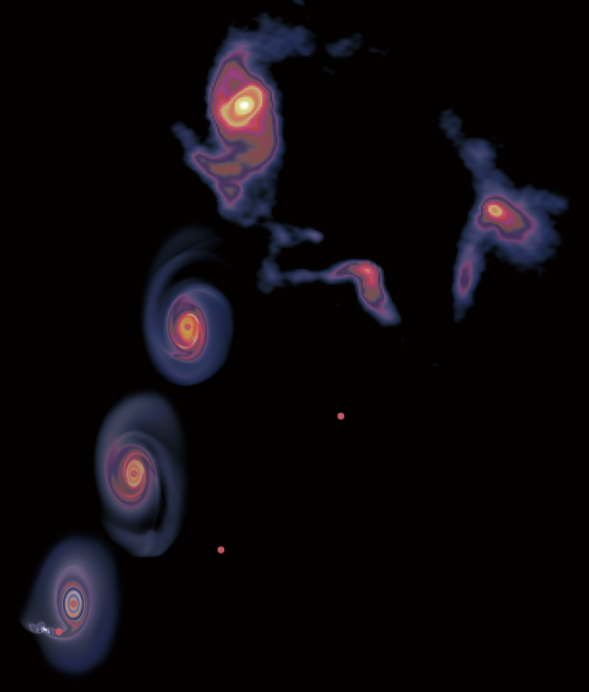Astronomers just gazed into the heart of the Milky Way Galaxy and found something endlessly odd.
A small spiral galaxy was discovered revolving delicately around a single huge star, which was like a galactic Russian doll that was just unboxed.

32 Times Huge As the Sun
As reported first by Science Alert, the star is around 32 times as huge as the sun and lies within a gigantic disk of spinning plasma called a "protostellar disk."
This disk is located around 26,000 light-years from Earth and found along near the dense galactic core.
Throughout the cosmos, such disks function as stellar fuel, allowing newborn stars to evolve into large and luminous suns over millions of years.
However, it is worth noting that astronomers have never witnessed such an oddity orbiting dangerously near the galactic center. Hence, there's a mystery about how this mini galaxy was formed.
But a new study published in the journal Nature Astronomy on May 30 could glean light into this mystery after discovering a strange object around three times the mass of the sun lying just outside the spiral disk's orbit.
ALMA Discovers A Bizzare Spiral
With the help of high-definition data collected with the Atacama Large Millimeter/submillimeter Array (ALMA) telescope in Chile, the researchers discovered that the disk does not look like its motion indicates a way that would give it a natural spiral structure.
They claimed that a near-collision physically whipped up the disk with another body, which could be the enigmatic triple-sun-sized object that's still observable nearby.
To test this theory, the researchers estimated a dozen possible orbits for the strange object. They conducted a simulation to determine if any of them might have taken it near to the protostellar disk to cause the object to spiral.
They discovered that if the object had maintained a precise course, it might have brushed past the disk around 12,000 years ago, disturbing the dust that was sufficient to produce the vibrant spiral form that can be observed in the cosmos.
This study indicates that outer objects can blow star disks into spiral forms generally only viewed on the cosmic scale and provides the first clear photos of a protostellar disk in the galaxy's heart.
Since the Milky Way's center is millions of times heavier with stars than our part of the galaxy, near-miss occurrences like this are likely to happen frequently, according to the astronomers.
Science Alert noted that the discovery suggests that the Milky Way's core may be brimming with small spirals that are yet to be seen by our space telescopes.
Related Article : Could a 'Mirror Universe' Solve Crisis in Cosmology? New Study on Hubble Constant Could Glean Light!
This article is owned by Tech Times
Written by Joaquin Victor Tacla
ⓒ 2025 TECHTIMES.com All rights reserved. Do not reproduce without permission.




